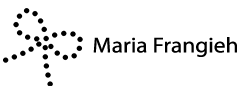Have you heard of the invisible hand? No! Think again!
The invisible hand is part of Adam Smith’s body of work- he’s also the father of capitalism and the author of the “Wealth of the Nations”. Smith, an advocate of free markets, as opposed to protectionism and government regulated markets, used the term as a metaphor. The term refers to the self-regulating nature of the marketplace. Basically, it’s the natural force that guides free market capitalism through competition for scarce resources. Smith posited that individuals when pursuing their own goals will be promoting the goals of the entire society. Smith has illustrated how he believes the economic society operates: Each individual in the society will be pursuing his/her own goal of increasing his/her wealth. In order to do so, the individual must engage in an exchange of goods and services with someone else in the society who will value what is offered. In a free market and due to the division of labor the society’s interest will be improved. Therefore, there will be no need for any regulations in the market since the “invisible hand” will guide the market to equilibrium.
Reality Check
We’re sure you’re wondering by now if the invisible hand is for real! Well, Smith himself was conscious of the precincts that existed on free markets. The Nobel Prize winning economist Stiglitz, in his book Making Globalization Work, provided a clear cut to this inquiry. The invisible hand does not often exist on the market. Markets will not promote equilibrium since externalities exist. Externalities are costs or benefits accruing to a third party other than the producers and consumers, like pollution, adverse health effects, and the like. In keeping with this, in the presence of externalities markets will not be able to promote equilibrium without the intervention of the government, which will impose taxes and regulations amongst other things to influence the market factors towards equilibrium. The question now becomes on finding the most appropriate balance between the market and the government, especially after the latest financial crisis. It is important to note that each market has its own balance depending on the time and characteristics.
The Here + Now
The Lebanese economy is characterized by a free market regime, a liberal financial sector, the promotion of a laissez faire commercial institution along with a government supported liberalism. It’s well known for being service oriented, mainly in the touristic and banking sectors. Foreign exchanges and capital movements are freely admitted in the country. A closer look into the economy confirms Stiglitz’s arguments on the missing invisible hand in some cases. After the civil war ended in 1990, the country’s economy was in trouble and massive capital was required to bring back the economy to its previous state. Since the Lebanese economy is service based, it was very difficult for the invisible hand to appear after 15 years of war, a large public deficit and a highly bureaucratic government. The government had no other solution but to intervene on the market and stimulate the market factors using different policies such as increasing government spending, privatization and other tactics.
Globalization has encouraged free markets. Many countries such as the USA, Canada, and nations throughout Europe are promoting laissez faire practices. But the existence of externalities and the latest financial difficulties are confirming the need for a government intervention. The dilemma of the right balance between the market and government intervention is endless. What is for sure is that the way out is customizable according to each country.





